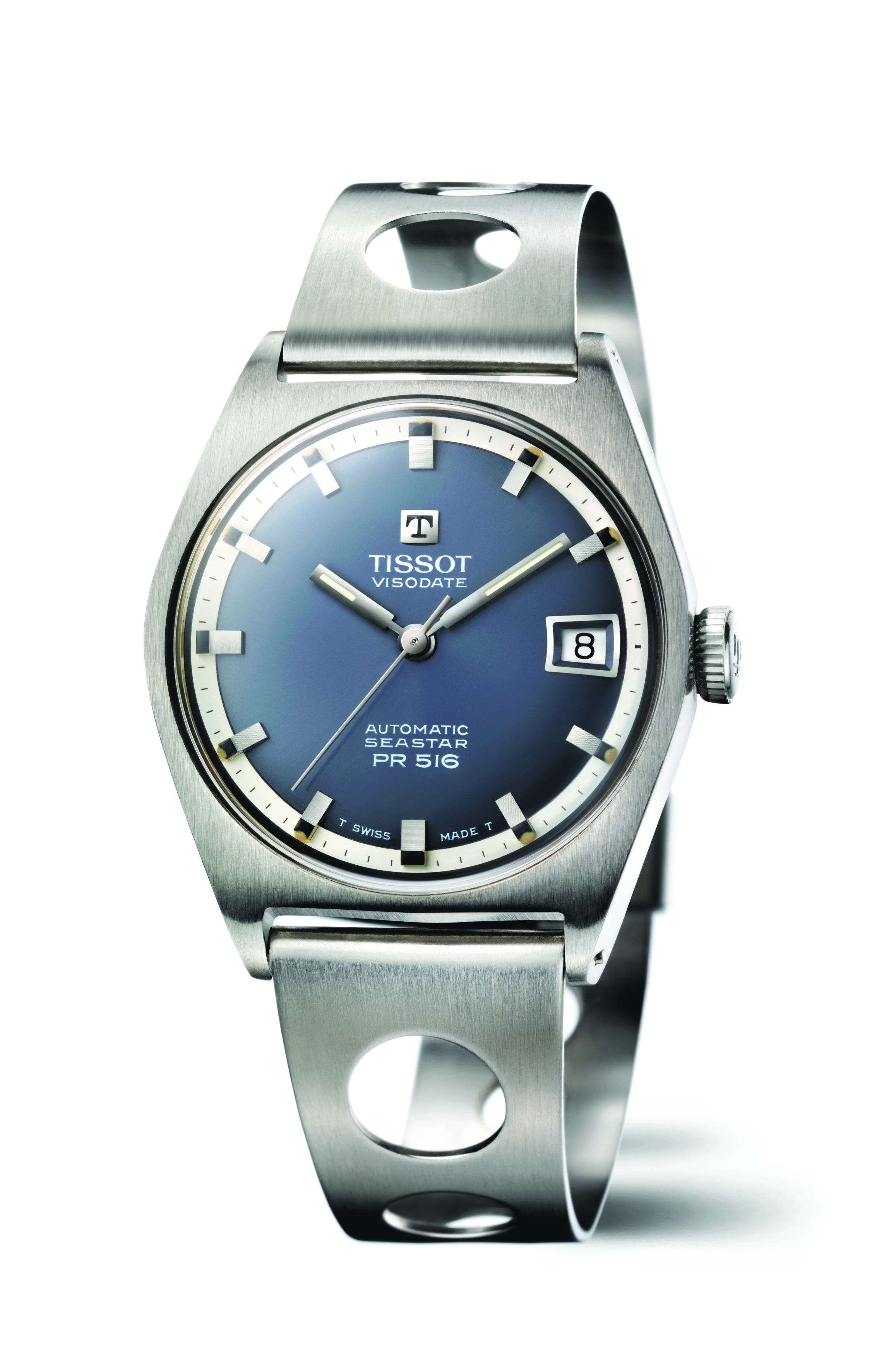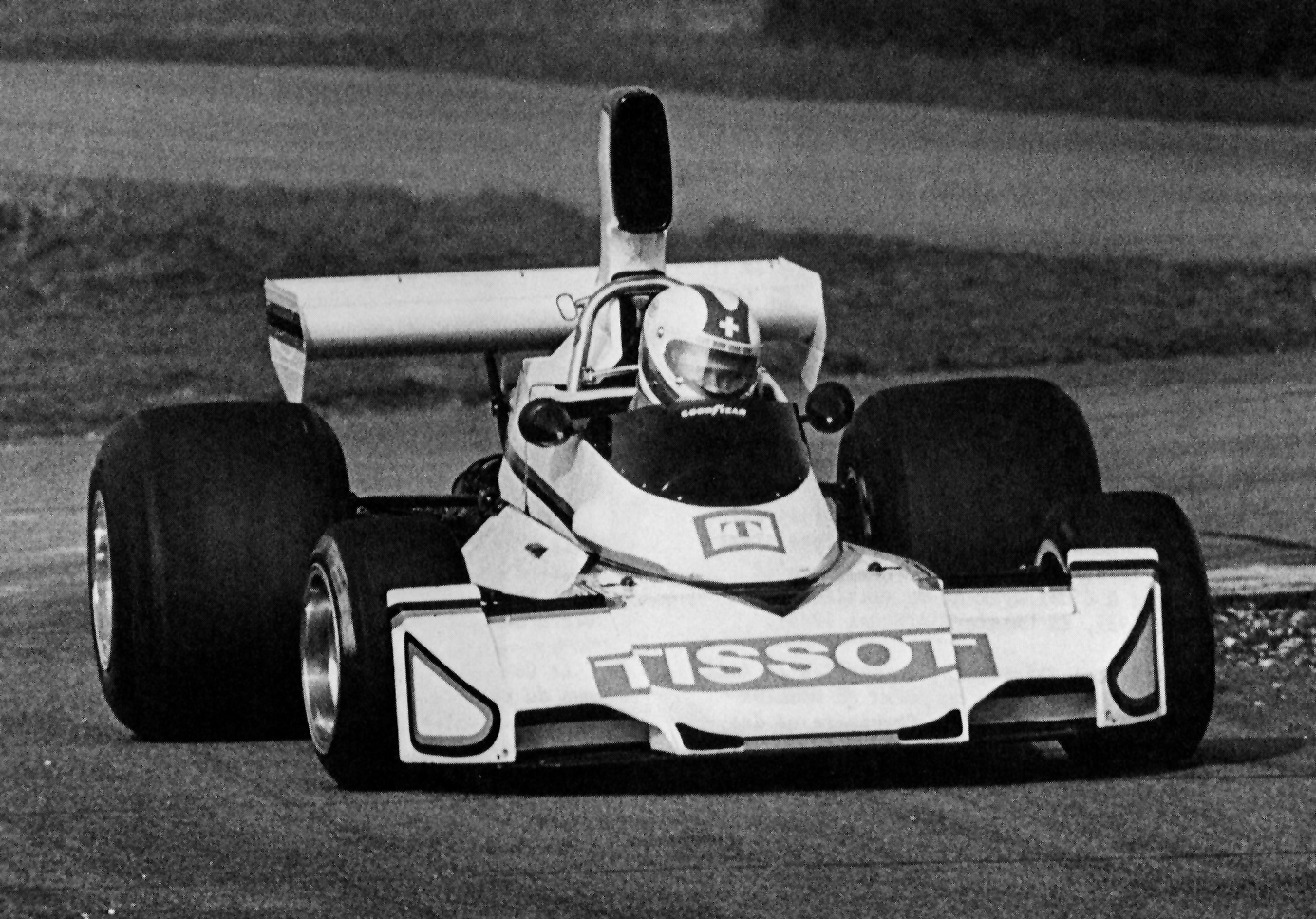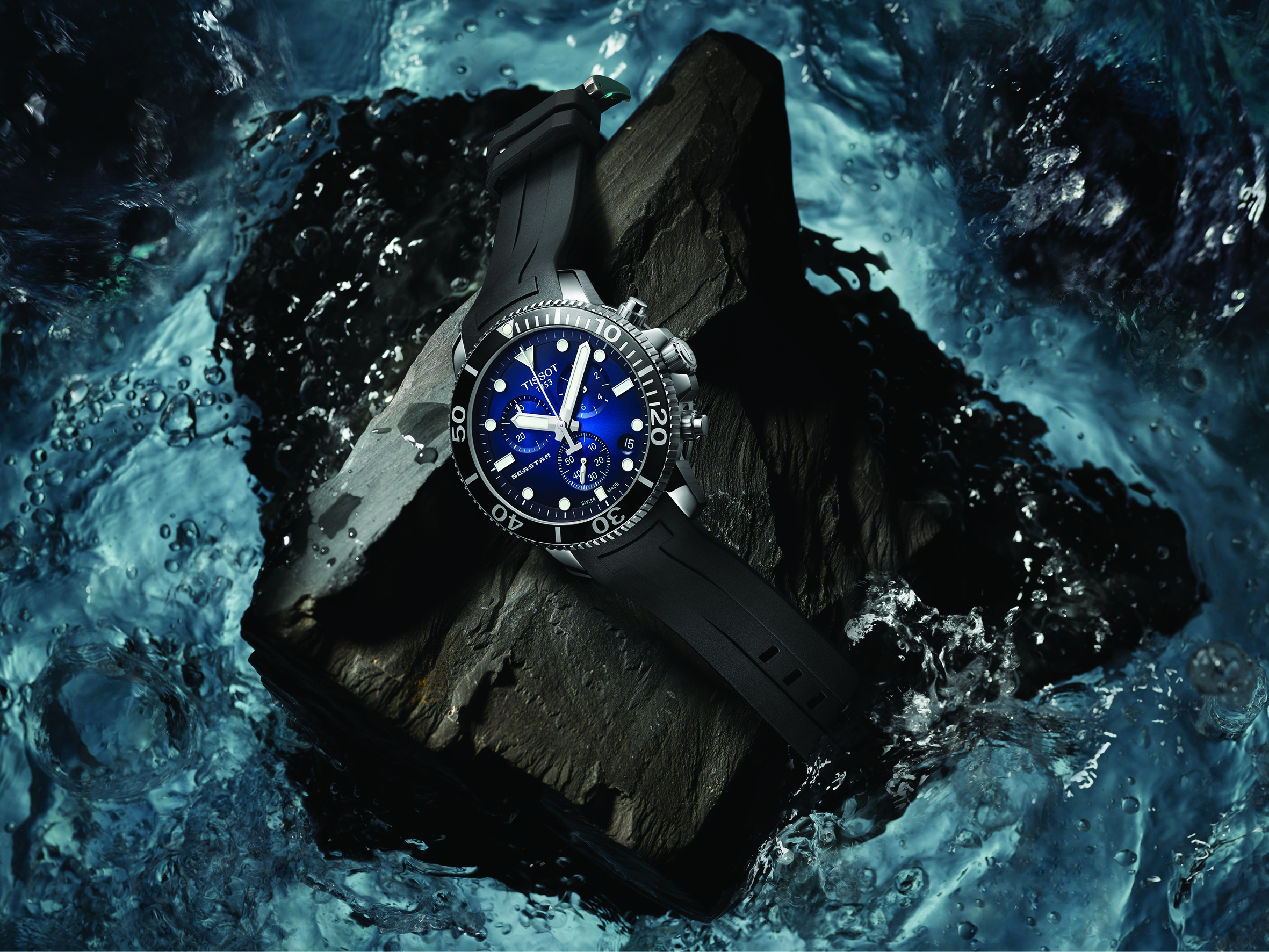Tissot was once in such a race, except the brand’s history with racing timepieces gets a little bit of a head start, with an all steel Tissot PR 516 that debuted in 1965. It fronted a minimalistic time-only configuration save for a date aperture, yet it was the patented perforated steel bracelet and suspended movement that propelled the watch to become the forerunner of Tissot’s racing campaigns.
One could say the 70s was the golden age of racing, constituting of the likes of Steve McQueen who romanticised the famed 24 Hours of Le Mans. Anyone who wasn’t a racer then started to turn to the racetracks to get into the speedy hall of fame, including watch companies who were racing one another to snag a space on the body panels as the title sponsor.
 Tissot PR 516
Tissot PR 516
The design language of Tissot’s racing watches carry particular consistency, which then melded into a signature trait. Such is the case for the latest Heritage, which takes a leaf from Tissot’s own archives, specifically with the 1973 Tissot Navigator in mind.
The Navigator encompassed the same barrel-shaped case, with bevelled shoulders and a perforated leather strap. Two totalisers stand out against the off-white dial, with orange accents that indicate the tachymeter, running seconds and 12-hour counter.
One cannot deny that its construction checks all the boxes of a good-looking racing chronograph. Both its form and function have lent itself to be a staple in Tissot’s racing history, from its partnerships with Alpine in rally circuits, Porsche at the 24 Hours of Le Mans, and more significantly with Formula 1, where Swiss racer Loris Kessel raced under the Tissot name.
 Loris Kessel racing under the Tissot banner in his Brabham BT44 in 1976.
Loris Kessel racing under the Tissot banner in his Brabham BT44 in 1976.
 Swiss racer Loris Kessel.
Swiss racer Loris Kessel.
In the 43 years that followed, the racetrack finally reached full circle when Tissot reforged its partnership with Kessel Classics, this time headed by Loris’ son, Ronnie, who spearheads the company’s name in autoracing. In homage to this piece of history and so aptly named, the Heritage 1973 refines the timepiece with a more balanced dial, adding a 30-minute totaliser, shifting the date aperture to the 4:30 position.
The new tonneau case carries more bevelled edges with a mix of brushed and polished finishing, including a more stylised engraved crown and pushers. The cream dial with its luminous indices and baton hands retain the vintage-like charm of old, downright to the breathable perforated leather strap.
The watch runs on an automatic winding Valjoux 7753 movement with a power reserve up to 46 hours. With a momentous story behind the partnership, the watch is made in a limited run of 1,973 pieces, in reference to the debut year of the Navigator.
.jpg) Tissot Heritage 1973.
Tissot Heritage 1973.
Tissot’s reiterations of its latest sports chronographs this year also highlight a significance in watchmaking history, which celebrates 50 years of the automatic chronograph. This simultaneously took place right before the 70s, not long before quartz watches were introduced, and were much more lauded and preferred for its constant precision.
Ultimately, the significant use of the chronograph in sports centres around timekeeping accuracy. Where fast laps are recorded on the racetrack, there is a vital need to measure time when diving underwater, to ensure that one has enough time to survive below the surface.
Based on the success of the Seastar 1000 Automatic last year, Tissot introduces the model in a chronograph version, powered by a highly accurate quartz movement that is housed in a stainless steel case with screw-down caseback, crown and pushers for optimum water resistance. The bold unidirectional bezel frames a gradated blue dial, with luminescent hour markers and main hour hands traversing across the triple-counter configuration.
 The new Tissot Seastar 1000 Chronograph.
The new Tissot Seastar 1000 Chronograph.
The Seastar 1000 Chronograph comes with two strap variations, one in a stainless steel bracelet finished with a folding clasp and safety and diver extension, and the other in a rubber strap with standard buckle. The Automatic model is also expecting a new update in late 2019, this time with a silicon balance hairspring in the movement.











 Back
Back
